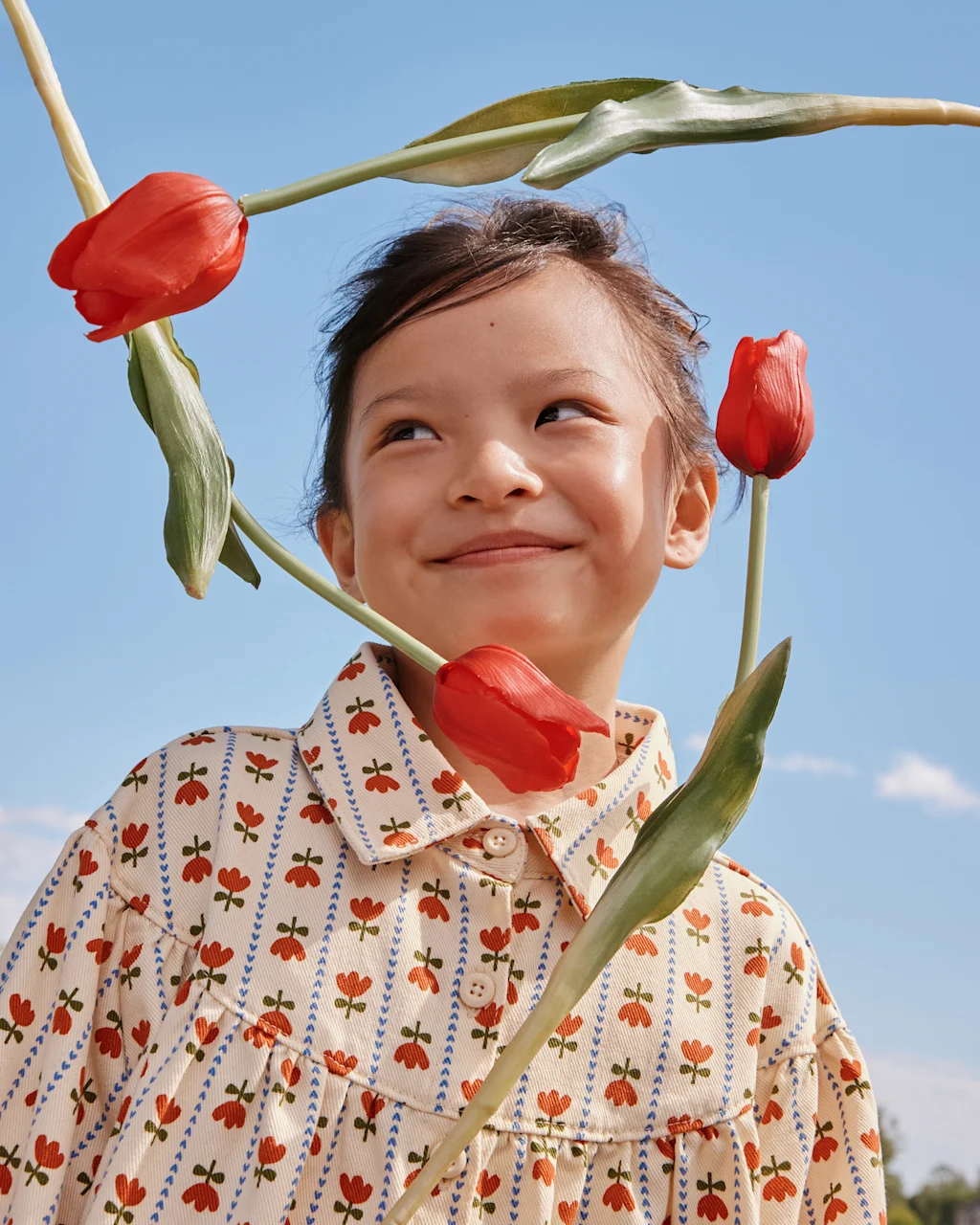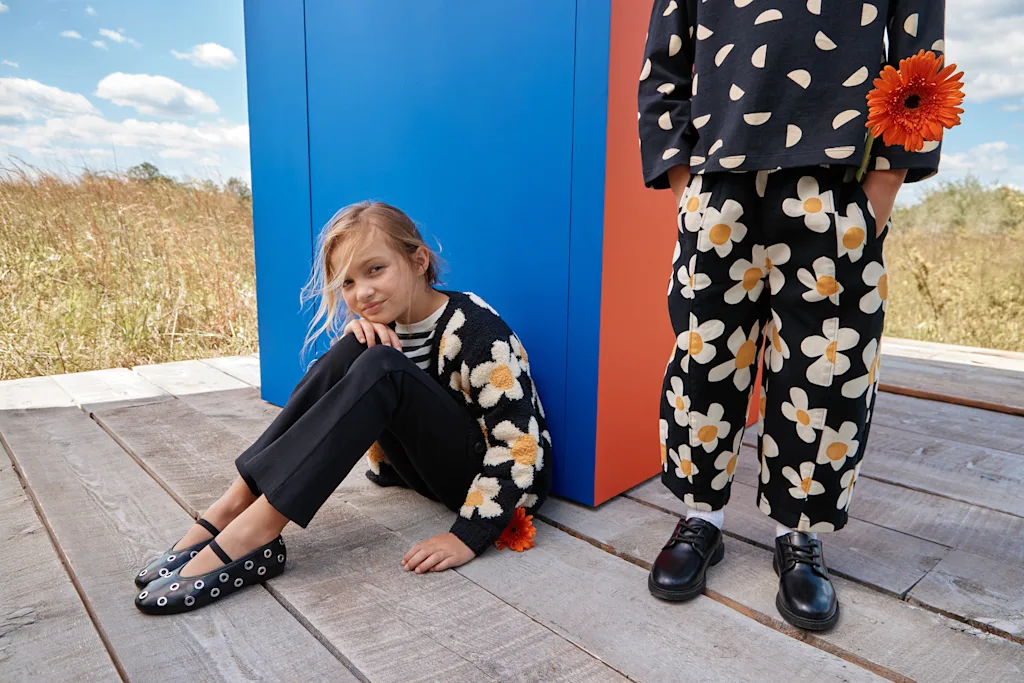
In 1995, the kids’ brand Hanna Andersson debuted matching family pajamas, kick-starting a trend. Three decades later, it’s become a tradition in many families to buy PJs emblazoned with reindeer or Christmas trees or menorahs to wear during the holidays. But if you’re concerned that seasonally specific sleepwear may not be so eco-friendly—after all, how much use will your toddler get from those Santa Claus jammies?—Hanna Andersson has a suggestion for you: Why not buy them secondhand?
In 2023, Hanna Andersson launched Hanna-Me-Downs, a website for customers to buy and sell pre-owned products. If you scroll through the site, you’ll find thousands of gently used Hanna Andersson pajamas for the whole family, along with dresses, T-shirts, and trousers from previous seasons. Since the platform debuted, Hanna Andersson has become the top resold children’s brand in the U.S., selling more than 160,000 garments to 25,000 customers. And interest in Hanna-Me-Downs is only growing, with site visits increasing by 30% this year.
Aimée Lapic, who became the brand’s CEO in 2022, helped launch Hanna-Me-Downs and believes it has been one reason behind the brand’s growth in recent years. (Since Hanna Andersson is a private company owned by the private equity firm L Catterton, it does not share its revenue, but says it has experienced double-digit growth since 2019, and even higher levels of profitability.) Other factors include its decision, in 2020, to shutter all 65 of its brick-and-mortar stores to become a purely digital direct-to-consumer retailer, and its launch, in 2023, of a rewards program that now has more than a million members.
While it might seem counterintuitive for a resale site to accelerate Hanna Andersson’s growth—since it might cannibalize the brand’s sale of new clothing—Lapic says the opposite is true. While the platform itself does not generate a profit, she believes it has brought new customers to the brand, also reinforcing the message that its products are made to last. “Circularity benefits us from a business perspective,” Lapic says. “It’s a real solid proof point that we sell high-quality, durable clothing.”

Shopping for Kids in the Era of Fast Fashion
Many parents find it hard to shop sustainably for their kids. Children grow out of their clothes quickly and ruin outfits with stains and tears. In the era of fast fashion, budget retailers like Carter’s and Target market children’s clothes that are so inexpensive, parents don’t mind if they only last a few weeks or months before throwing them out. So it might not seem worth it to spend more on durable clothes that are more expensive.
Four more than 40 years—as fast fashion has taken off—Hanna Andersson has tried to make the case that it is worth spending more on high-quality kids’ clothes. Its dresses start at $50, and T-shirts start at $30. Carter’s sells those products for as low as $15 and $5, respectively.
This focus on quality goes all the way back to the brand’s origins. Hanna Andersson was founded by Gun Denhart, a Swede who had settled in Portland, Oregon. She wanted to create clothing that would allow kids to play in the rainy, muddy conditions that were common in the Pacific Northwest.
Today, the company continues to focus on quality, thanks to rigorous durability standards. In testing, each garment is washed between 60 and 100 times to ensure the fabric won’t wear out or fade. Over the years, the company has introduced new eco-friendly fabrics such as certified organic cotton, Oeko-Tex fabrics that are certified to be free from harmful chemicals; and its newest material, HannaSoft, which is made of bamboo. In each case, it puts the new materials through durability tests.
Hanna Andersson has attracted a wide range of customers, Lapic says. Some are well-heeled parents who shop from other high-end children’s brands, like Petit Bateau or Janie and Jack. But others are middle-class families. “Not all of our customers are wealthy,” she says. “Some just buy fewer clothes than they would otherwise, and others buy secondhand.”
For years, consumers have been shopping for used Hanna Andersson clothes on other brands’ secondhand sites. Lapic says that it made sense for the company to create its own platform so it could engage directly with these fans of the brand. “Our clothes were very popular on ThredUp and Poshmark,” Lapic says. “We thought we had an opportunity to keep these buyers and sellers within the Hanna Andersson ecosystem.”

Resale as a Growth Engine
Lapic says that the brand tries to give Hanna-Me-Downs customers good value for their old clothes. When they send in a used product, they can get 70% of the resale value in cash. If they choose to get store credit at the main Hanna Andersson website, they can get 100% of the resale value. Lapic says that 80% of sellers choose the store credit option. And the brand has found that when these customers use their credit to shop from the Hanna Andersson site, they spend two and a half times the amount on the gift card.
Besides engaging people who are already big fans of the brand, Lapic says that it has also tapped into an entirely new customer base that has never shopped with Hanna Andersson before. This group is drawn to Hanna-Me-Downs’ lower prices, and 50% will return to the site to stock their kids’ closets with pre-owned Hanna Andersson clothes. “They end up buying from us multiple times,” she says.
Ultimately, Lapic says that Hanna-Me-Downs illustrates that promoting sustainable behavior doesn’t have to come at the cost of profitability. The resale site keeps clothes circulating in the economy for longer, and reinforces the message that it is better to buy fewer, better-quality items. “We are excited about how this platform benefits our customers, the planet, and future generations,” Lapic says.


